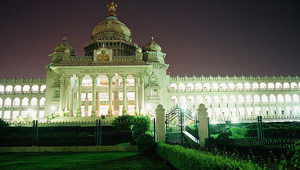
Built of Granite and Porphyry this imposing building houses the Secretariat and the State Legislature of Karnataka. Constructed in 1956 after the transfer of power from the ruling Wodeyar dynasty to the central government, it was designed by Kengal Hanumanthaiah, the then Cheif Minister, who intended it to "Reflect thr Power and Dignity of the People". It is capped by a 20-m (66ft) dome, which is surmounted by the four-headed Ashokan lion, symbol of the Indian State. With Rajasthani Jharokhas, Indo-Saracenic pillars and other decorative elements, the Vidhana Soudha exemplifies the Neo-Dravidian style of Post-Independence Bangalore. The woodwork inside is noteworthy. Especially the sandalwood door to the Cabinet Room, and the Speaker's Chair was made of rosewood from Mysore. The Building looks spectacular on sunday evenings when it is beautifully illuminated.
Tipu Sultan's Palace
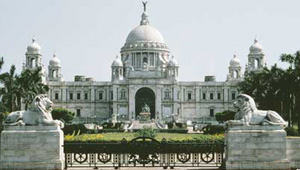
Tipu Sultan's Palace is located very close to the fort. It is now converted to a museum. The building of the palace was started by Hyder Ali and it was completed by Tipu Sultan. The construction of the Palace was completed in the year 1791 and it took ten years to plan and construct the palace.
The Palace was one of Tipu Sultan's summer retirements. It is a double storied flowery wooden structure. It has columns, curves and balconies which are laid with gardens on both sides of the path which leads to the palace. A dedication on the wooden screen reports the palace to be an "Abode of Happiness".
Attara Kacheri
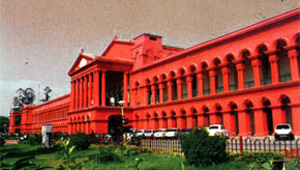
Attara Kacheri of Bangalore was built under the reign of Tipu Sultan, the Emperor of Mysore. It is said that during his time, the offices of the eighteen departments of Revenue and General Secretariat expanded to quite an extent. Since the palace could not house the offices, he ordered the construction of a new building, where the offices could be relocated. He named the building as Attara Kacheri, meaning eighteen offices or departments.
There are a number of buildings worth visiting near Attara Kacheri. They comprise of the Visveswaraya Industrial and Technological Museum, Public Library, the Venkatappa Art Gallery and the Government Museum.
Bangalore Palace
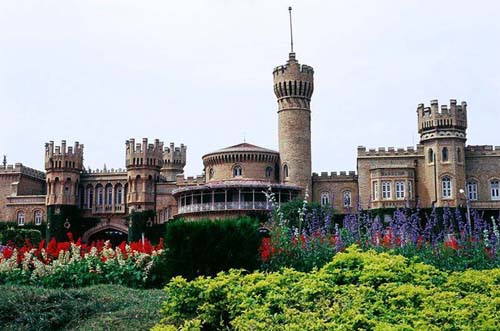
Bangalore Palace is situated in the Palace Gardens, at the heart of the Bangalore city of India. Built in the year 1887 by Wodeyar dynasty, it is adorned with magnificent woodcarvings and Tudor-style architecture on the inside. Infact, the palace is quite similar to the medieval castles that were built in Normandy and England. The Windsor Castle of London left a great impression on King Chamaraja Wodeyar of Wodeyar dynasty, on one of his trips to England. Inspired by the Tudor style architecture, he got the Bangalore Palace built in the city.
Lal Bagh Botanical Gardens
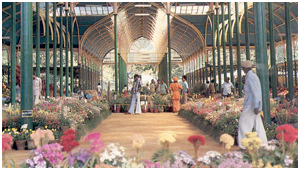
The Lalbagh Botanical Garden, Bangalore is of royal origin and was started initially as a private garden in an area of 40 acres by Hyder Ali, one of the most famous rulers of old Mysore in 1760. Initially designed in Mughal style, on the model of an extensive garden at Sira in Tumkur near Bangalore, this garden was further developed by Hyder Ali's son Tipu Sultan and subsequently by the British and Indian doyens of horticulture by extension of area and addition of a number of plant species. Of them, Major Waugh, Dr. Wallich, William Munroe, Sir Mark Cubbon, Dr. Cleghorn, William New, A. Blck, John Cameron, Krumbeigal, Rao Bahadur H.C. Javaraya, K. Nanjappa and Dr. M.H. Marigowda, as the Superintendents of the garden, have made noteworthy contributions to the development of Lalbagh.
Lalbagh is currently under the aegis of the Directorate of Horticulture, Government of Karnataka. The Directorate is housed amidst the splendid environs of the botanical garden. Lalbagh was given the status of a Government Botanical Garden in 1856, and since then, it has been an internationally renowned centre for scientific study of plants and botanical artwork and also conservation of plants.
Bannerghatta National Park
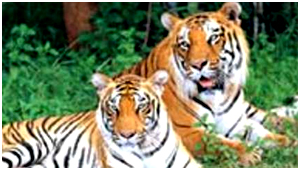
Bannerghatta National Park established in the year 1971, lies 22 km. away from Bangalore, the capital of Karnataka state. It covers around 104.27 sq.kms which includes ten Reserve Forests of Anekal Range of the Bangalore Forest Division. Bannerghatta comprises the National Park, an Aquarium, a Zoo, Children's park, Crocodile Farm, Snake park, Prehistoric animals park and a Museum. Safaris to see tigers and lions in vehicles and on elephants is the main attraction of the Park. Tickets for entry into the Zoo and Safaris are available at the main entrance.
This park is open throughout the year, and the temperature in Bannerghatta ranges from 15°C to 35°C during the year, with an average rainfall of about 700mm annually. The best time to sight wild life is the months of November to June.
This National Park is a treasure house of exotic species of wildlife and a great variety of flora. The flora of the place is very rich and beautiful with huge green trees providing shade and shelter all through the year.
Srirangapatnam
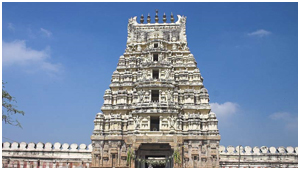
Situated just 13 Km from Mysore, Srirangapatna is surrounded by River Kaveri form all sides. The town gets its name from the famous Temple Ranganathaswamy Temple that dominates the landscape of the town. Due to Ranganathaswamy Temple, Srirangapatna is an important Vaishnavite site and is frequented by many pilgrims. Srirangapatna once served as the capital of Mysore when Hyder Ali and Tipu Sultan ruled over it. This brought the town into recognition then and made it historically important. Tipu Sultan built Srirangapatna as his fortress and used it to launch attacks on British. Tipu sultan built many buildings that are now the main attractions of the city for tourists.
Chamundi Hills
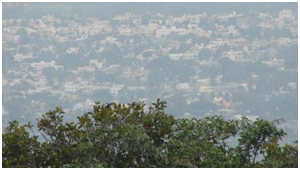
Chamundi Hills is the prime landmark of Mysore city, visible almost from anywhere in the city center. The hill has very close association with the founding of the city. In fact the very name of Mysore is associated with the hill.
According to mythology this was the domain of the demon called Mahishasura ( the Buffalo Demon). The place was thus known as Mahishapura or Mahishuru , the land of Mahishasura. And that later morphed into Mysore in English and Mysooru in Kannada, the local language.
A boon made Mahishasura so powerful that no man can kill him. Unable to stand his atrocities, people prayed to the goddess to save them from Mahishasura. Goddess Shakti, the personification of cosmic energy in the feminine form, took the avatar (form) of the fierce goddess Chamundeshwari. She kills the demon and saves the people. Because of this act the goddess is called Mahishasuramardhini , the slayer of demon Mahisha.
Visvesvaraya Industrial and Technological Museum
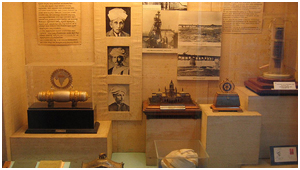
The Visvesvaraya Technological Museum has within its portals various scientific disciplines. Exhibits are placed behind glass panels, with buttons which are pressed for the experiments to begin.
The Electrotechnic Gallery has various electrotechnic experiments and the history of the development of telephone technology. There is also a wall display of long distance telephone operations along with all its essential components. The Timber, Paper and Metals Gallery has a life size model of a man and woman tending a plant. There is a fascinating wall model of the map of India which is a console with various buttons.
Over this are the names of twelve types of trees. Between the name of the tree and the button is a small square glass case. Press a button and the glass lights up with a picture of the specified tree. Corresponding areas where the tree exists light up on the map, indicating its areas of growth. The metal section has replicas of ancient gold coins, the oldest dating to the 4th century AD.
Nehru Planetarium
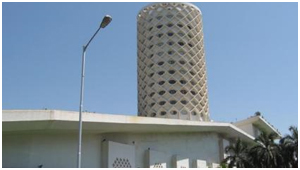
The Jawaharlal Nehru Planetarium is situated at T. Chowdiah Road in Bangalore. Established in the year 1989, it counts amongst the popular tourist attractions of the city. There is a sky theater inside the planetarium, with a huge dome that has a diameter of fifteen meters. It has a seating capacity of 225 and serves as the venue for two shows of astronomy on a daily basis. The timings of the show are 3:00 pm and 4:30 pm, with the exception of Mondays. In the following lines, we have provided more information on the Jawahar Lal Nehru Planetarium of Bangalore, India.
The shows held here are extremely good and provide a good view as well as factual knowledge on astronomy. There is also an observatory inside the Jawaharlal Nehru Planetarium of Bangalore.
Government Museum
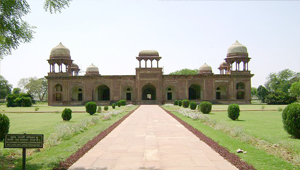
Government Museum was established in 1886. Housing a collection of coins, art and relics from the Mohenjodaro, Halebid and Vijayanagar, Government Museum is a place worth visiting during Bangalore Tours. Watch out for relics dating back to 5000 years at none other than the historical Government Museum in Bangalore. Get to know more about the Government Museum during a visit.
Explore prehistoric belongings of Neolithic period, which were discovered during Chandravalli excavations at the famous Government Museum in Bangalore. On exhibition in the museum are South Indian jewelry, clothing, intriguing stones and so on. Government Museum is in fact divided in to different sections like geology, natural history, sculpture, art and numismatics.
Yediyur Lake
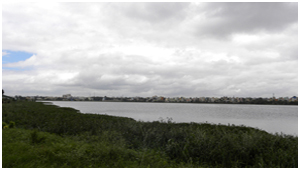
Yediyur Lake, located in the Basavangudi area of Bangalore. The picturesque lake sparkling like quicksilver is a prime tourist attraction and picnic spot in Bangalore. Adventure enthusiasts and nature lovers can have a rollicking time going for scintillating scooter and boat rides in the lake. A small and pretty park blossoming in the color and fragrance of the seasonal blooms is situated in the lakes vicinity and is frequented by morning walkers and joggers alike.
A distinguishing feature of Yediyur Lake is the beautiful figurine of a girl sculpted by John Irving that is situated in the center of the lake. Over the years other talented local artists have also added their contributions to the lakes and enhanced the tranquil beauty of the jewel glittering in an oasis of idyllic green.
Muthvalamaduvu
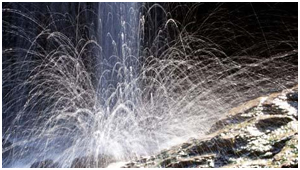
This place has beautiful surroundings with waterfalls captivating any traveler's heart. It is located 44 kms from Bangalore via Brigade road-Hosur road-Anekal. You can stay at Traveler's Bungalow 6 kms from Anekal town on the Hosur road.
Mandya
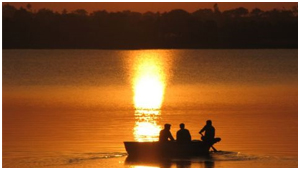
90km from Bangalore, Mandya is a district headquarters. It is an industrial town for sugar and paper factories. This place is home to famous Brindavan Gardens which are located at Krishna Sagar reservoir. Shivana Sundaram Waterfalls and Melukote Temple are also situated here. Kaveri River is the main source of water in Mandya. The city has 7 talukas (districts) Malavalli, Maddur, Nagamangala, Krishnarajpet, Pandavapura, Srirangapatna, Mandya.
Whitefield
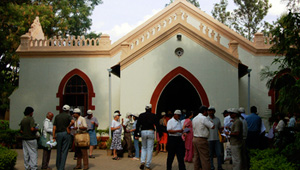
Whitefield is a suburb of Bangalore, situated at a distance of approximately 24 km from the heart of the city. The place is mainly known for housing the Brindavan Ashram of Sri Sathya Sai Baba. Inaugurated by Sai Baba on 25th June 1960, the ashram lies near the Whitefield Railway Station. Every year, in summers, Sri Sathya Sai Baba stays at the Whitefield Ashram near Bangalore for nearly three months. Given below is more information about the Brindavan Ashram in Whitefield, Bangalore.
Namada Chilume
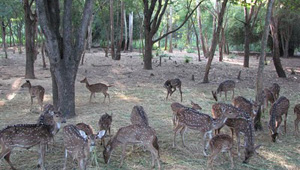
En route to Devarayana durga is a place located called Namanda Chilume( the Spring of Tilaka/Nama) at the base of the hill road leading to Tumkur. Tilaka or Nama or Pundraka is a ritual mark on the forehead, of sandalwood paste, coloured earth or vermilion. Based on the Puranas it is believed that Sri Rama during Vanavas(exhile to forest) on his way to Lanka halted here.
Nandi Hills
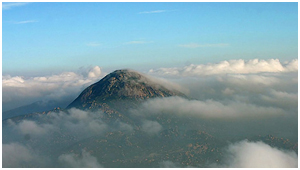
Nandi Hills or Nandidurg is a hill fortress of southern India, in the Chikkaballapur district of Karnataka state. It is located just 3 to 5 km from Chickballapur Taluq, 60 km from Bangalore. It is 4851 ft (1478 m) above sea level. Nandidrug hill, known commonly as Nandi Hills, is the source of the Penner, Ponnaiyar and Palar rivers. Nandi Hills gets its name from an ancient Nandi temple situated on this hill. This temple has a thousand year old sculpture of Nandi. An ancient lord Shiva and Parvati temple also adorns this hill.